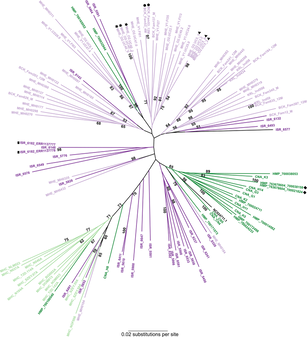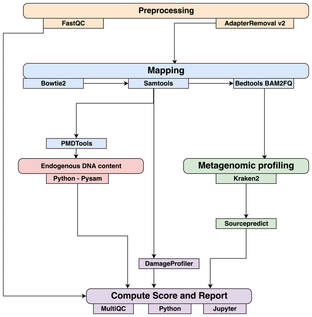Gut Microbiome Evolution
The Lewis Working Group has made significant contributions to understanding human gut microbiome evolution through the study of fecal samples collected from industrialized populations and traditional peoples, and archaeological coprolite samples.
The Lewis Working Group has made significant contributions to understanding human gut microbiome evolution through the study of fecal samples collected from industrialized populations and traditional peoples, and archaeological coprolite samples.
|
Biogeographic study of crAssphage
I recently led a study (Honap et al. 2020) looking at the biogeography of crAssphage, which is a bacteriophage that is commonly found in the human gut. In this study, we screened publicly available human gut shotgun metagenome data from more than 3,000 samples for the presence of crAssphage. We showed that crAssphage presence is not associated with host variables such as age, sex, body mass index, and health status; thus, crAssphage seems to be part of the normal human gut virome. Interestingly, we found that crAssphage is prevalence is low in hunter-gatherer populations living a non-industrialized lifestyle, such as the Hadza from Tanzania and Matses from Peru, as compared to industrialized, urban populations. Global crAssphage strains do not show strong biogeographic clustering but do show evidence of a recent population expansion. Our work shows that crAssphage was introduced to human populations relatively recently and likely underwent a population expansion due to the advent of industrialization. |
|
CoproID tool for identification of paleofeces
As part of collaborative study, we co-published a bioinformatics tool called CoproID (Borry et al. 2020). This tool can be used to infer the host source of fecal material by studying the composition of microbial and host DNA in shotgun metagenomic sequencing data. CoproID can help distinguish morphologically similar paleofeces (such as human and canine paleofeces) as well as non-fecal sediments, from a range of archaeological contexts. |

